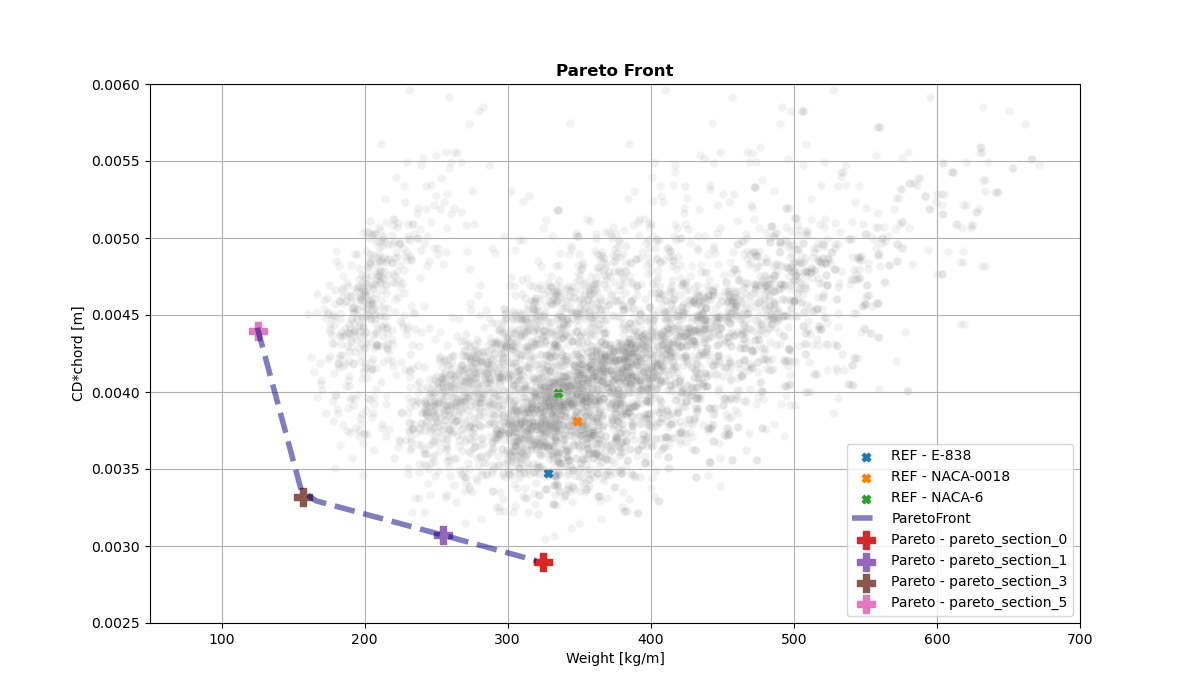Hollow Keel Section
Weight–Drag Tradeoff with Structural Constraints
This case study builds upon the methodology used in a previous keel section optimization, but introduces a new design variable: section weight. The objective is to explore the trade-off between hydrodynamic drag and structural weight, using a hollow keel section.
Context
Designing a keel section requires balancing hydrodynamic efficiency, structural performance, and now, wall thickness. A thinner structure reduces weight, but may increase drag or compromise strength. Understanding this trade-off is key to identifying a meaningful optimum.
Methodology
- Input Parameters
Defined performance and cavitation conditions, along with structural and geometrical constraints (e.g. max chord, thickness).
For the particular case study:- Upwind: 8 kn, CL·chord = 0.16
- Downwind: 12 kn, CL·chord = 0.05
- Candidate Generation
A parametric model produces thousands of hollow section shapes, each with a different internal geometry. - Evaluation & Optimization
- Each section is evaluated using XFoil.
- A machine-learning surrogate model is trained on the dataset and used to generate a Pareto front of drag vs. weight, under the constraint that sections must meet structural criteria.
Results
The resulting Pareto front reveals a clear turning point around Section_3:
- Attempting to go lighter than that point leads to a steep increase in drag.
- Up to that threshold, weight can be reduced by ~50% with only a moderate drag penalty.
- This enables informed design decisions based on project priorities — whether to favor lighter structure or lower hydrodynamic resistance.

The images below show the four representative sections along the Pareto front, illustrating the design trade-offs between weight and drag.
- Section 0 – Lowest drag
Solid section thath prioritizes hydrodynamic performance, resulting in higher weight.
- Section 1 – Low drag, heavier structure
A compromise between weight and drag; sits well before the sharp increase on the Pareto curve.
- Section 3 – On the Pareto kink
Marks the transition point on the Pareto front — just before drag increases significantly. A particularly interesting design from a trade-off perspective.
- Section 5 – Very light, high drag
Achieves very low weight with a large chord and thin walls, but at the cost of significantly higher drag — beyond the efficient trade-off region.

Summary
By introducing section weight as an optimization variable, this study shows how machine learning can help navigate the complex relationship between drag and structural mass.
The Pareto front provides a powerful tool for identifying designs that offer the best balance between weight and drag.